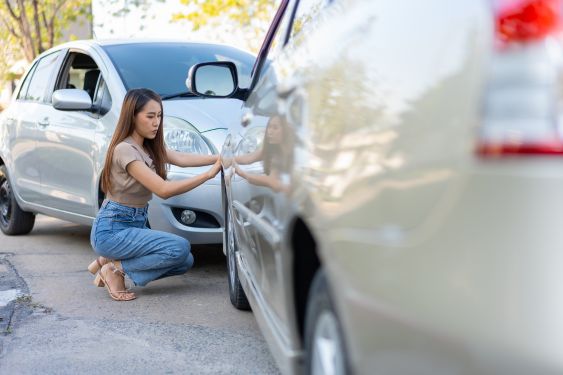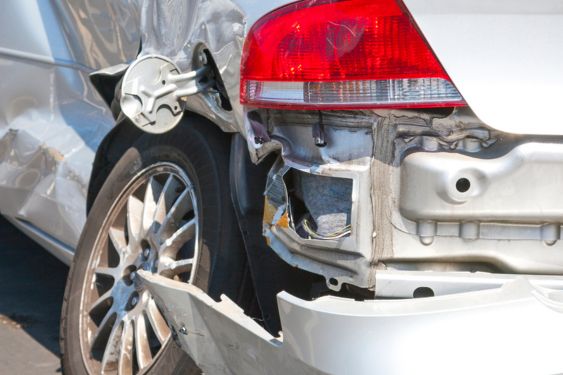
Written by Kayla Jane Barrie Updated on Oct 06, 2025 6 mins read

Should you admit fault in an accident? What determines who is at-fault? These are some of the first things that go through your mind when you get into a collision.
Car accidents happen. However, whether or not you are the one at-fault and how it will impact your Ontario car insurance can be a grey area. Drivers need to and want to know more about this topic, and this blog explains the most common at-fault accidents and how fault can be determined.
Being at-fault is precisely as it sounds – you are the driver responsible or the cause of an accident. For example, you are the car that initiated contact or failed to stop in time. You are the cause of the collision.
Your insurer determines the amount of fault for which you are responsible. They will perform an investigation. Someone will always be found to be at-fault, whether it's fully or partially. You can be found anywhere from 0% to 100% responsible.
One thing that many drivers are unaware of is that at-fault applies to all drivers. When you lend your car to someone, you also lend that person your insurance. If the person who borrows your car has an at-fault while driving it, their accident goes on your record, and your costs could go up.
When you lend your car to someone, you also lend that person your insurance. If the person who borrows your car has an at-fault while driving it, their accident goes on your record, and your rate could go up.
Fault determination rules were created to help insurance companies, police, and others determine who is at-fault and how much fault they share. Your insurer determines who is at-fault. To do this, they use the Fault Determination Rules created under the Insurance Act to investigate the accident and assign it. Who is at-fault for an accident is only sometimes clear initially. Many factors go into fault determination, such as who was involved, where they were driving, speed, and road conditions.
Under the Ontario Fault Determination Rules, they explain, after you report an accident, the company will investigate the circumstances and then make a decision based on the accident fault determination rules in Ontario.
2. (1) An insurer shall determine the degree of fault of its insured for loss or damage arising directly or indirectly from the use or operation of an automobile in accordance with these rules.
Here are some considerations that insurers will explore to determine fault:
You have the right to disagree with the fault determination. This is why it's so important to document everything. You can appeal the decision and state your case to your provider. All companies have an appeal process in place. A third-party mediator may also be brought in to make a final determination.
There are many different types of car crashes and accidents that you could be involved in when driving – sideswipes, T-bones, head-on incidents, multi-car pile-ups and more. However, there is a difference between getting into an accident and being the cause of one.
In some accidents that happen on our roads, highways, parking lots and even driveways, whose fault it is not always clear cut. Here are 12 common collisions and who is potentially to blame when cars collide:
Preventing accidents requires responsible driving, obeying traffic laws, and regular vehicle maintenance. Here are tips to stay safe on the roads:
What happens if a pedestrian causes an accident or runs in front of your car? The same rules apply in determining fault, such as if two vehicles caused it. Your company will use the fault determination rules to assess responsibility for the incident. There are several common situations where pedestrians can be found to be at-fault, even if they are not hit by the vehicle or injured. They include:
Being involved in an accident is bad enough. But, getting into an accident that is not your fault and with an uninsured driver can complicate things.
The good news is you are covered. All policies in Ontario include uninsured automobile coverage. This protects you in instances you are involved in an accident with someone who is driving without insurance. You will deal directly with your provider, and they will compensate you for damage and medical costs.

Once you ensure everyone is okay at the accident scene, file a police report, take your vehicle to the reporting centre, and contact your insurance company. Don’t admit fault.
If you are found to be at-fault, expect a change in premium or possible denial when it is time for your car insurance renewal. If you have an accident on your record, it’s more important than ever to browse rates to find coverage and keep costs down. If your policy has accident forgiveness, you may not see any impact from the claim.
You must still file a claim if you are involved in a not-at-fault accident. The claims process works the same as if you are responsible. You report your accident at your local reporting centre, notify your agent or advisor, and complete the required paperwork.
Determining fault becomes more complex when more than two vehicles are involved, such as multi-vehicle accidents.
There are many factors at play in an intersection accident. Whether or not the light was red, a driver was turning left; traffic violations occurred, and more need to be considered to assign fault.
Tire blowouts happen all the time. In general, your policy does not cover tires. A blowout may or may not be considered an accident, especially if no other vehicles are involved. The nature of the blowout will also be considered – it could be caused by debris or a manufacturer defect. Fault is determined on a case-by-case basis.
By practicing safe driving and limiting your distractions, you can lower the chances of being at-fault for an accident. Of course, not all collisions can be prevented, and you should always have your car insurance up to date.
| Categories | Auto |
|---|---|
| Tags | AccidentsAuto CoverageAuto Claims |
Read our insurance blog to get helpful tips, information and news.
Drive safe this winter! Check out these tips for driving in snowy and icy conditions in Ontario. Get other helpful info and FAQs on winter driving.
Drive safer this winter. Learn how the right set of winter tires drastically reduces stopping distance and risk on ice and snow. Get expert tips from your trusted insurance provider.
Ontario municipalities have until November 14 to remove all automated speed enforcement cameras following fast-tracked provincial legislation. This post breaks down why the government is removing them, the pushback from road safety advocates, and what alternative measures will replace them.
What is specified perils insurance coverage? Learn about named perils policies for Ontario drivers. Get info about coverage, if you need it & answers to common questions.